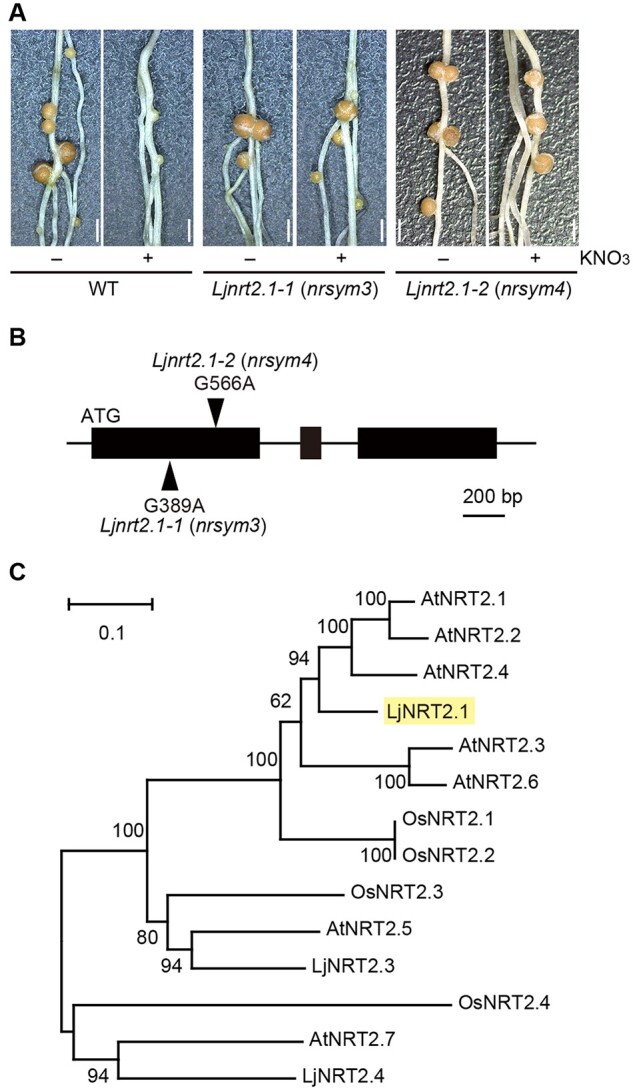Figure 1.

Identification of the LjNRT2.1 gene. A, Nodule phenotypes of the WT, the Ljnrt2.1-1, and the Ljnrt2.1-2 mutants grown with 0 (−) or 10 mM KNO3 (+) for 21 dai. Scale bars = 1 mm. B, Exon-intron structure of the LjNRT2.1 gene. The arrowheads indicate the locations of the Ljnrt2.1-1 and the Ljnrt2.1-2 mutations. C, A phylogenetic tree of the NRT2 gene family from A. thaliana, Oryza sativa, and L. japonicus generated using the Neighbor-Joining method. The nomenclature for LjNRT2 genes was based on previous studies (Criscuolo et al., 2012; Valkov et al., 2020). LjNRT2.2 was excluded from the phylogenetic tree, as this sequence is unlikely to be functional (Supplemental Figure S3). The percentage of replicate trees in which the associated taxa clustered together in the bootstrap test (1,000 replicates) are shown.
